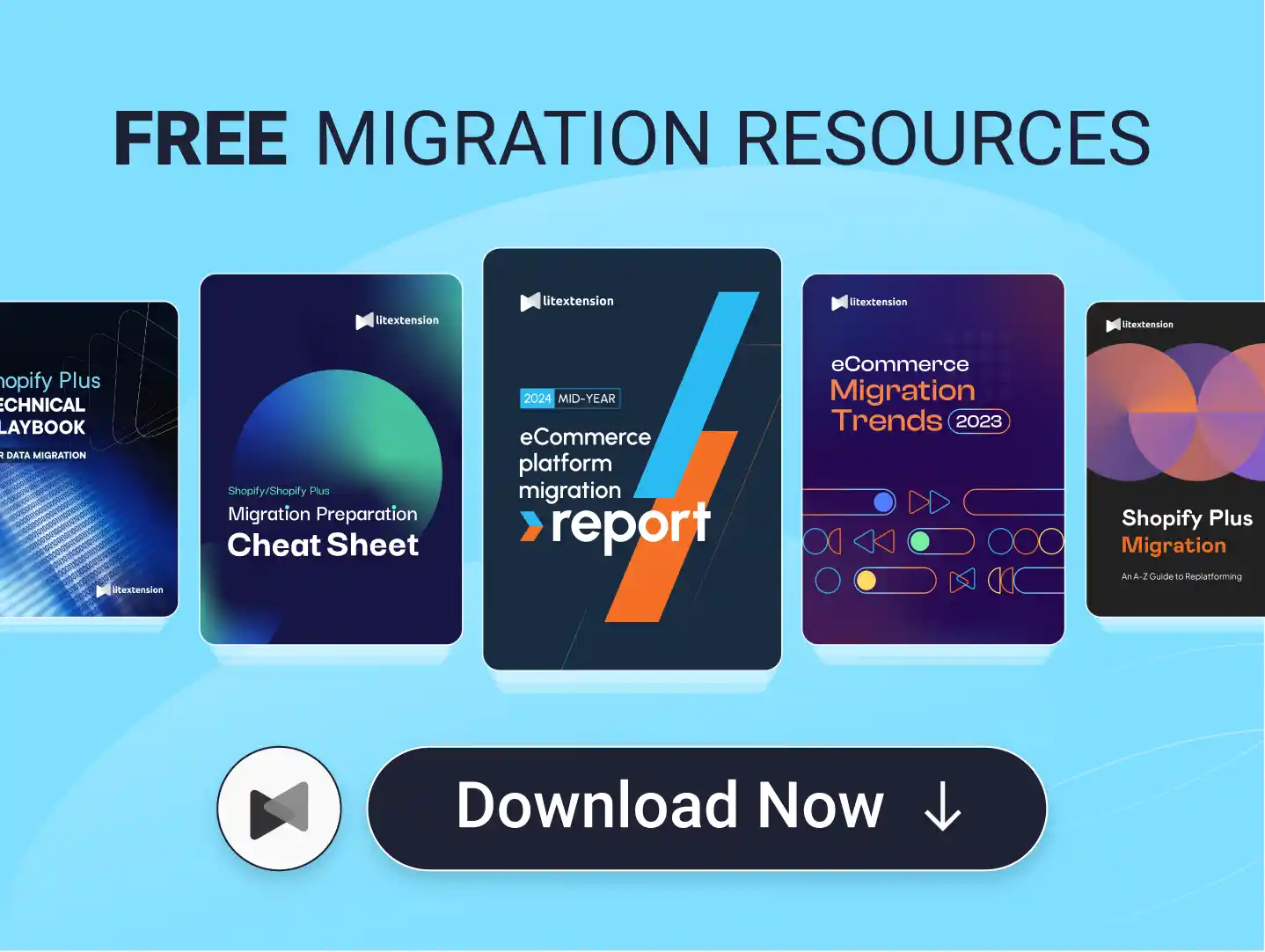You’ve likely heard that SAP Commerce Cloud isn’t your typical plug-and-play eCommerce solution, and that’s true. It’s designed for enterprises with complex needs, global operations, and high standards for flexibility and integration.
In this in-depth review, we’ll walk through everything SAP Commerce Cloud offers. This way, you will understand how the platform can help you:
- Customization & content management;
- Product catalog management;
- Search & merchandising;
- Promotions & payments;
- Cross-border commerce;
- Integration & extensibility;
- AI & advanced capabilities;
- Architecture & technology;
- Support & community.
Keep reading for more details!
What is SAP Commerce Cloud?
SAP Commerce Cloud is the cloud-based eCommerce platform to SAP Hybris, designed to help enterprise businesses that need more than just a basic storefront. It allows you to manage sophisticated eCommerce operations across B2B, B2C, or hybrid models – all from a single, unified system.
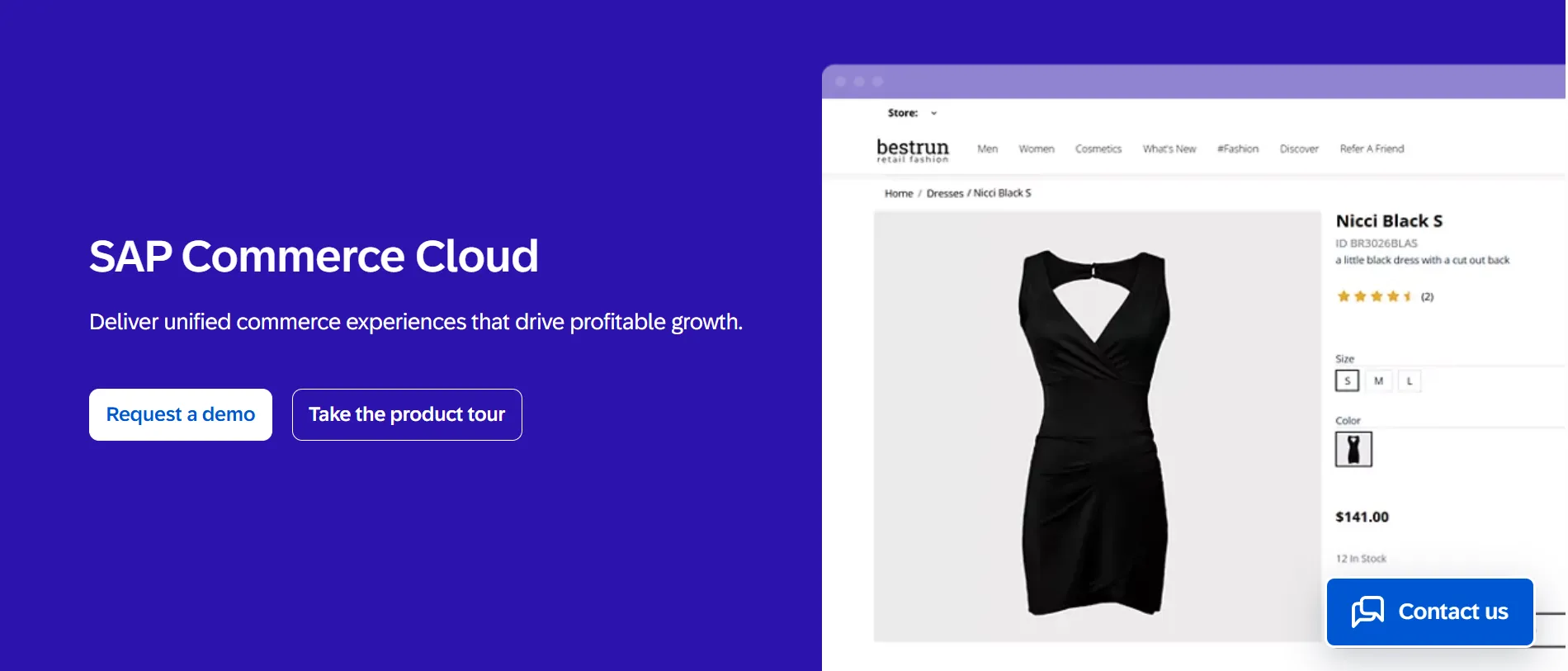
Built with scalability and flexibility in mind, the platform supports complex product catalogs, personalized buying experiences, and multi-site global commerce. Here are a few key advantages you can expect with SAP Commerce Cloud:

- Full control at scale: Manage complex catalogs, channels, and workflows from one centralized platform, without losing control as you grow.
- Consistent customer experience: Deliver a seamless, personalized journey across all touchpoints, whether you're selling to businesses or consumers.
- Enhanced business performance: Empower teams with real-time insights to make faster decisions, optimize operations, and boost results.
- Flexible growth path: Expand into new markets easily, launch new models, or integrate new tools without replatforming.
- Enterprise-grade stability: Rely on proven technology backed by SAP’s global support and long-term product roadmap.
Who is ideal for using SAP Commerce Cloud?
From our experience, SAP Commerce Cloud proves to be a strong fit for large enterprises, especially those managing multiple storefronts, operating across different regions, and serving both B2B and B2C customers. It also works particularly well for companies already invested in the SAP ecosystem and looking for a tightly integrated solution that can scale and evolve over time.
SAP Commerce Cloud Pricing Packages
When running your business on SAP Commerce Cloud, you can choose from 2 editions. Each is designed to suit different levels of flexibility, features, and implementation needs.
Although the actual cost for both editions is calculated based on your annual order volume or Gross Merchandise Value (GMV), we have done some research to provide you with a general idea. Based on various sources and industry insights, the typical pricing for SAP Commerce Cloud usually starts around $150,000–$300,000+ per year.
Compared to other enterprise eCommerce platforms, the SAP pricing falls in a similar, sometimes slightly higher price range. Platforms like Salesforce Commerce Cloud or Adobe Commerce (Magento Enterprise) also start around $100,000–$250,000+ per year, depending on usage and service tiers. However, the higher cost is often justified by deep SAP B2B commerce capabilities, powerful integrations, and extensive customization options.
Aside from the standard licensing for businesses, SAP also offers a package for partners, like digital agencies, solution integrators, or consultants. It allows them to run test and demo environments internally. If you're not an SAP partner, you can skip this option.
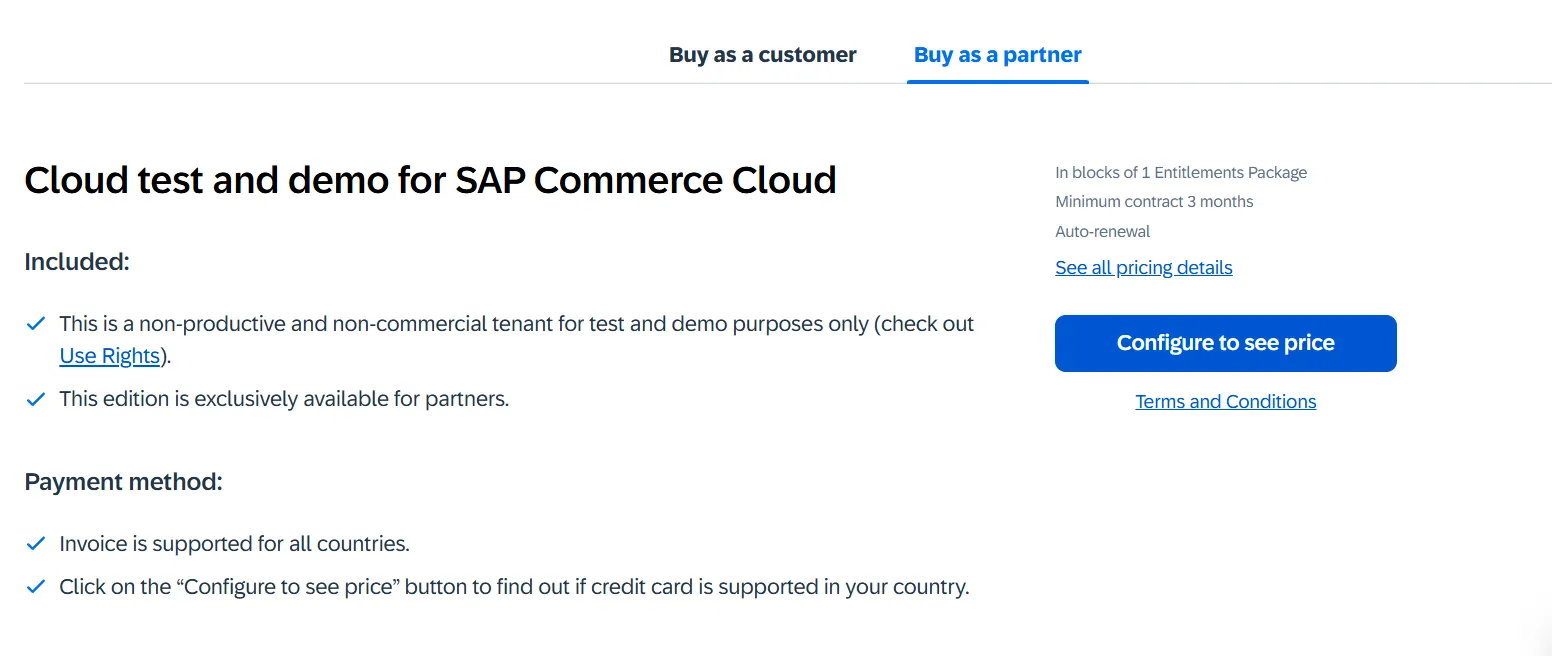
SAP Commerce Cloud Review on Core Commerce Features
Let’s now take a closer look at what powers SAP Commerce Cloud – its core commerce features. These capabilities form the foundation of how the platform supports complex operations across different business models.
1. Customization & content management
SAP Commerce Cloud gives you the tools to build a composable storefront using modern JavaScript-based front-end technology. This approach lets you create fast, responsive storefronts that are independent from the backend, giving developers full control over design and user experience.
To support this setup, SAP provides SmartEdit – a visual, drag-and-drop editor that allows content managers to update storefront content, preview changes across devices, and publish without needing to write code. This setup keeps the site running smoothly, with developers team handling the structure and business team managing content independently.
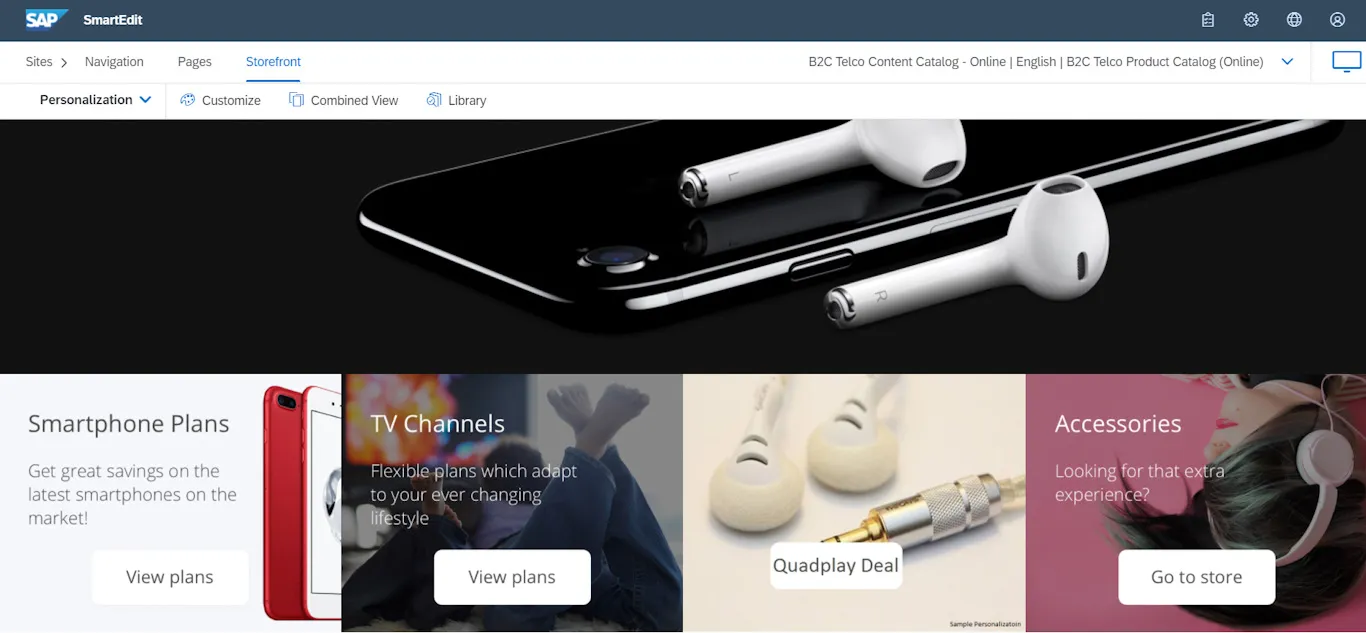
Once the storefront is in place, you can further tailor the experience with built-in personalization tools. You’ll be able to show different banners, product recommendations, or layouts based on a customer’s behavior, location, or segment, making it equally effective for both B2B and B2C models.
For global brands or businesses managing multiple storefronts, SAP also makes it easy to reuse components and content across different sites. More specifically, they can share templates, layouts, and assets to ensure brand consistency and speeds up time-to-market when launching in new regions or sales channels.
Behind the scenes, SAP’s enterprise content management system keeps all digital assets, from product data to media files, organized in one place. From there, you can distribute those assets across multiple storefronts, apps, or portals using the same backend system.
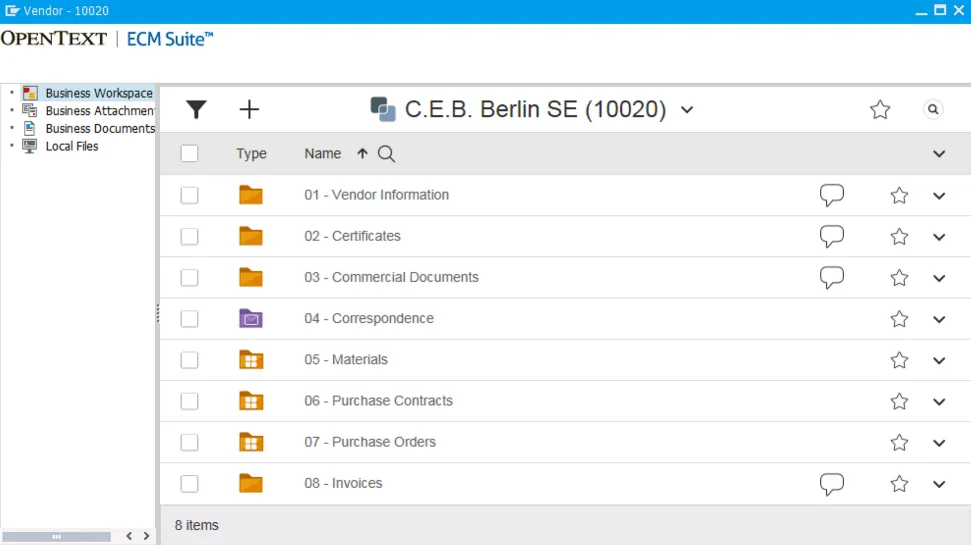
If you’re working with a large team or managing multiple storefronts, this centralized approach makes collaboration much easier and helps everyone stay aligned.
2. Product catalog management
Managing product information at scale is one of the biggest pain points for large eCommerce operations. In response, SAP Commerce Cloud offers a powerful suite of catalog management tools built to ensure accuracy, efficiency, and consistency across all channels.
2.1. Centralized product data with SAP PCM
At the core is SAP Product Content Management (PCM), which serves as a centralized hub for all product-related data. It helps you onboard information from multiple systems, consolidate it, and push it to sales and marketing channels. This unified source of truth ensures your customers always see accurate, up-to-date product content, no matter where they’re shopping.
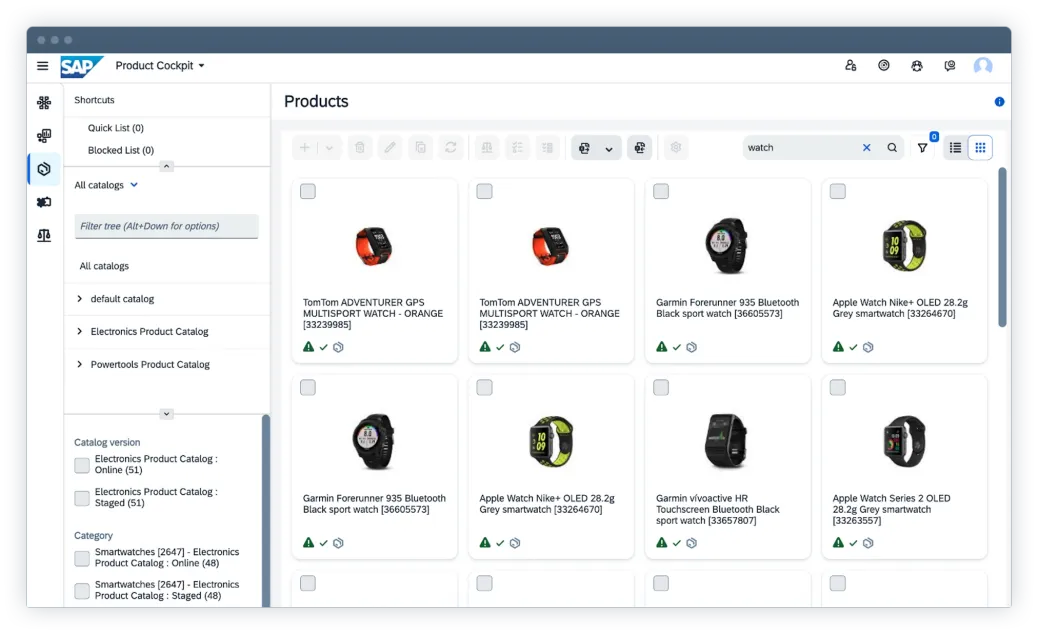
2.2. Product detail view
On each product page, you can manage everything, from attributes and descriptions to images, videos, and metadata, all in one centralized view. It’s designed to help teams easily review, edit, and complete product data without relying on multiple systems.
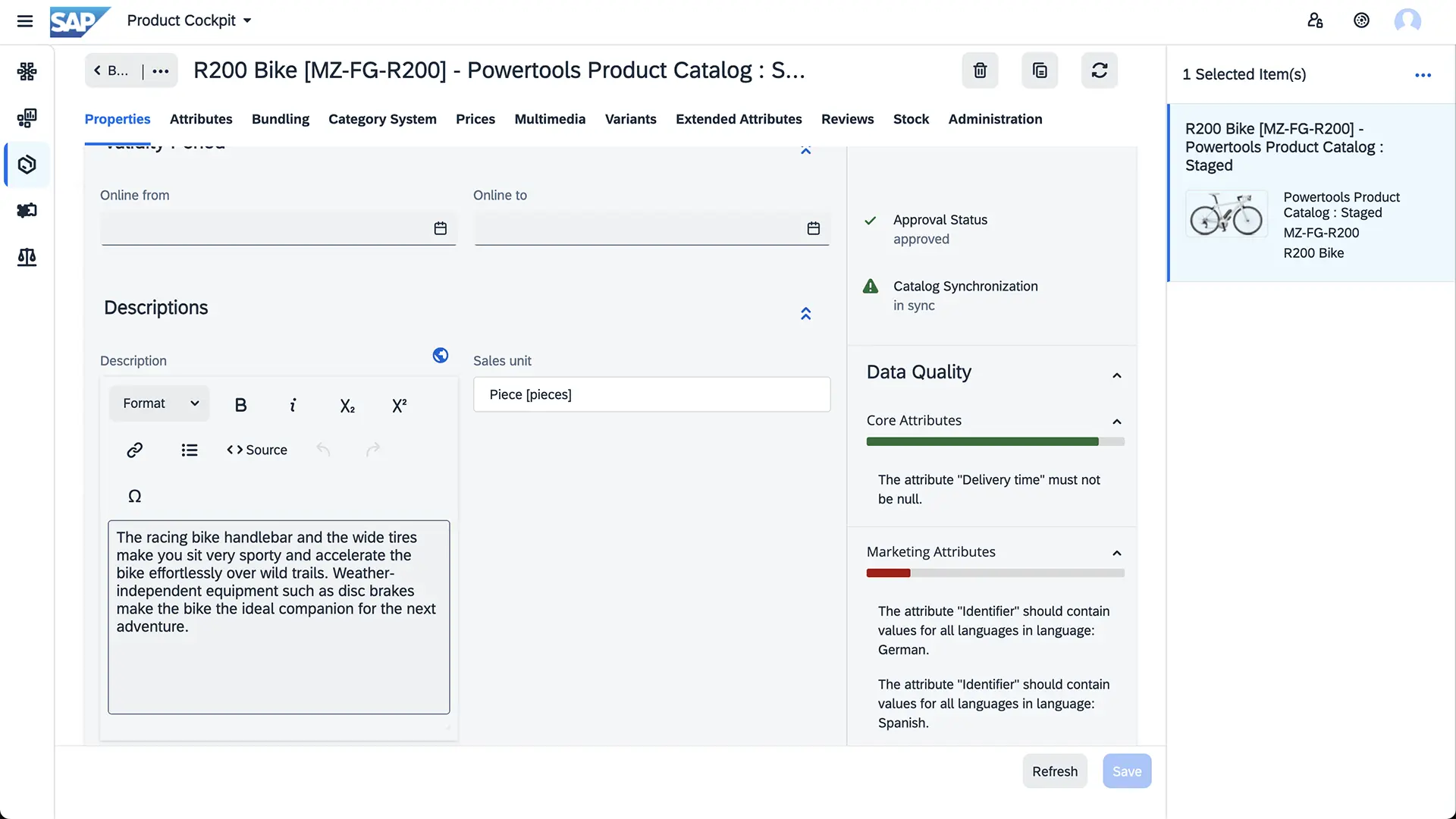
To maintain a clean and reliable catalog, automated quality checks run in the background. These rules flag missing or inconsistent data early on, so your team can fix issues before they reach the storefront. It’s a simple, effective way to maintain high standards across thousands of SKUs.
2.3. Products & catalog management
For businesses managing large, fast-changing product catalogs, SAP Commerce Cloud offers powerful tools to stay organized and consistent, without needing to rebuild from scratch every time something changes. These features help teams streamline catalog operations and maintain control as product offerings grow:
- Product bundles: Easily group products together and define pricing rules using drag-and-drop tools.
- Catalog versioning & synchronization: Create and manage different versions of your catalog without affecting the live site. You can review drafts, make changes, and push updates only when they’re ready.
- Workflows & collaboration: Set up approval workflows and team notifications to keep the catalog publishing process smooth and error-free.
All of this is tied together by a business-centric UI that’s designed for non-technical users. Product and category managers can bulk edit data, upload content, and manage catalogs through an interface that’s intuitive and customizable.
2.4. Quality control & team collaboration
To help large teams stay coordinated, SAP includes built-in dashboards and approval workflows. You can monitor product data quality, view pending tasks, and spot bottlenecks in the content lifecycle. With automated data validation and completeness checks, the system helps maintain clean and reliable product content across the board.
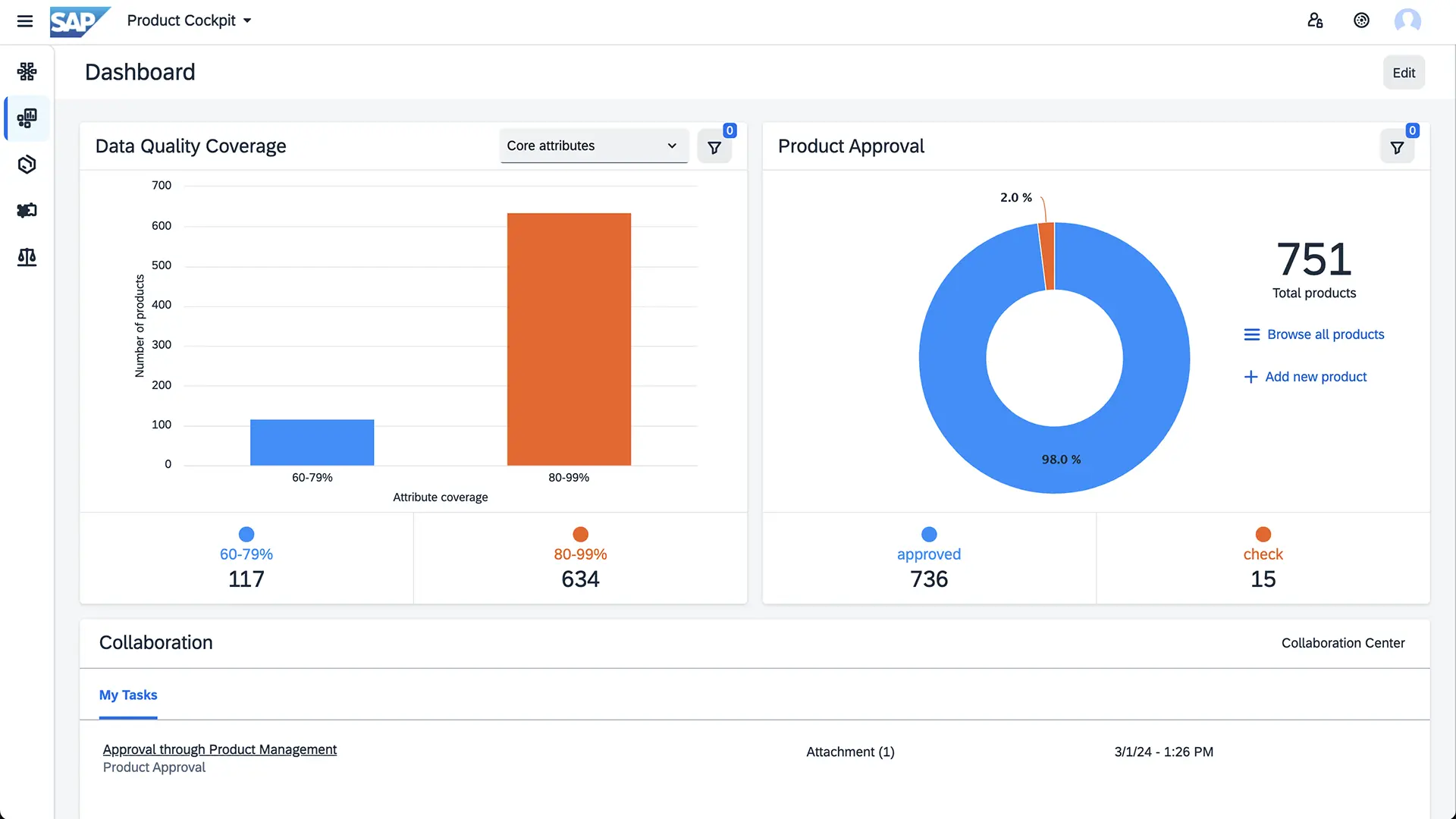
Overall, SAP Commerce Cloud delivers what you’d expect from an enterprise-grade platform: robust catalog tools, clean data control, and a UI built for scale. But it shines most when used by teams who already understand the importance of data governance and structured workflows. If you’ve outgrown the limitations of plug-and-play platforms, this is a strong next step.
3. Search & merchandising
SAP Commerce Cloud includes several features that help shape how customers discover products. From smart search to merchandising analytics and product recommendations, these tools are built to support your conversion rate.
3.1. Intelligent commerce search
SAP Commerce Cloud’s search engine uses AI and behavioral data to personalize results based on past actions, device type, or even location. This means different users can see different products, even when they search for the same term. That’s a big win for both B2B and B2C setups.
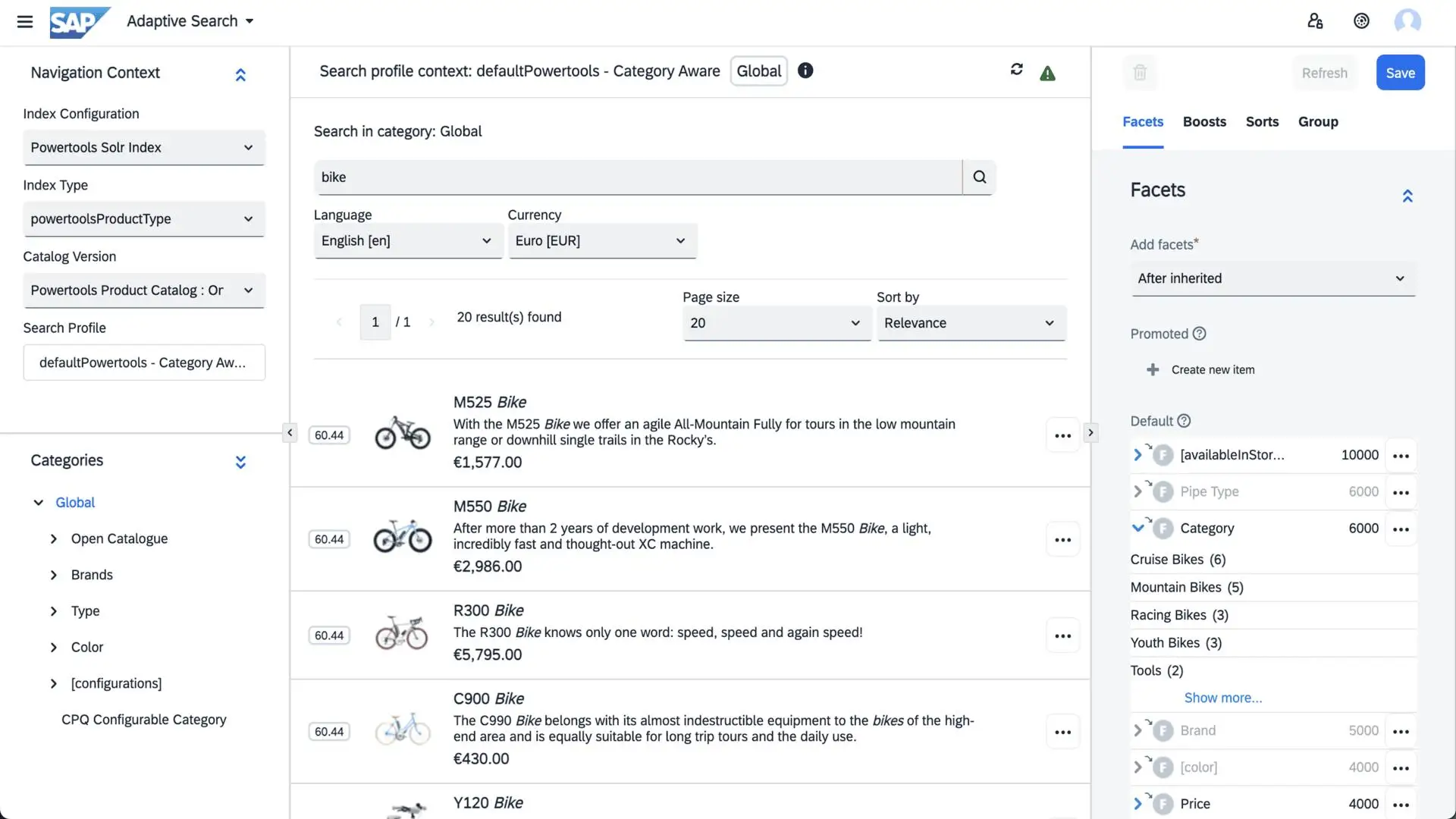
That said, it’s not perfect out of the box. From our experience, it takes some fine-tuning to truly match user intent, especially when you're working with multiple languages or complex B2B queries.
3.2. Personalized product carousels
The platform supports real-time product recommendations through AI-powered carousels. These appear across pages like home, product, or cart, tailored to user activity. It’s effective for upselling and cross-selling, especially in B2C.
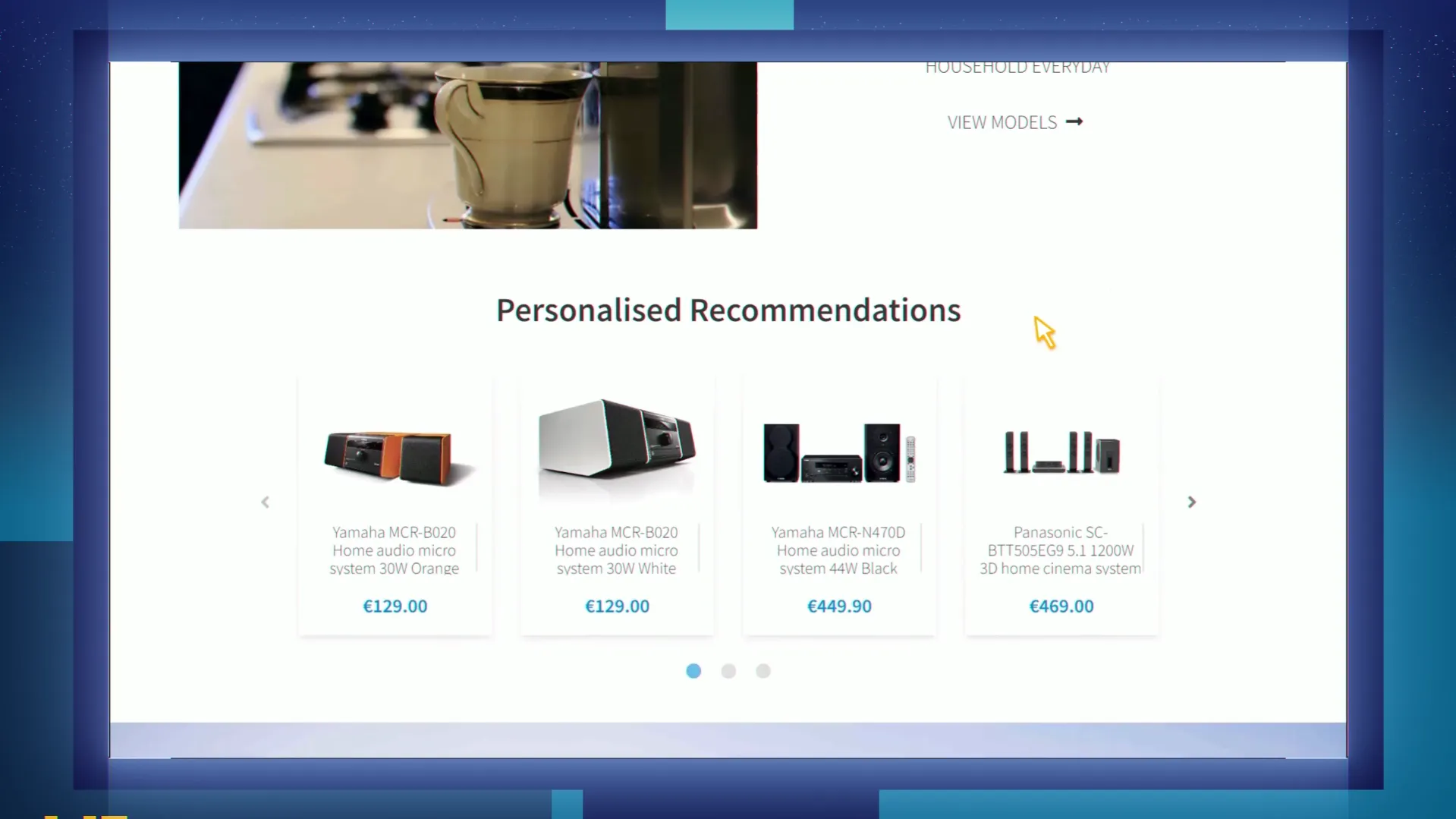
3.3. Merchandising analytics & dashboards
Merchandisers get access to campaign and product performance dashboards. You can monitor conversions, track what users interact with, and adjust product placements or promotions accordingly. While the UI is clean and business-friendly, we think more advanced teams may want deeper analytics or integrations with other BI tools for cross-channel insights.
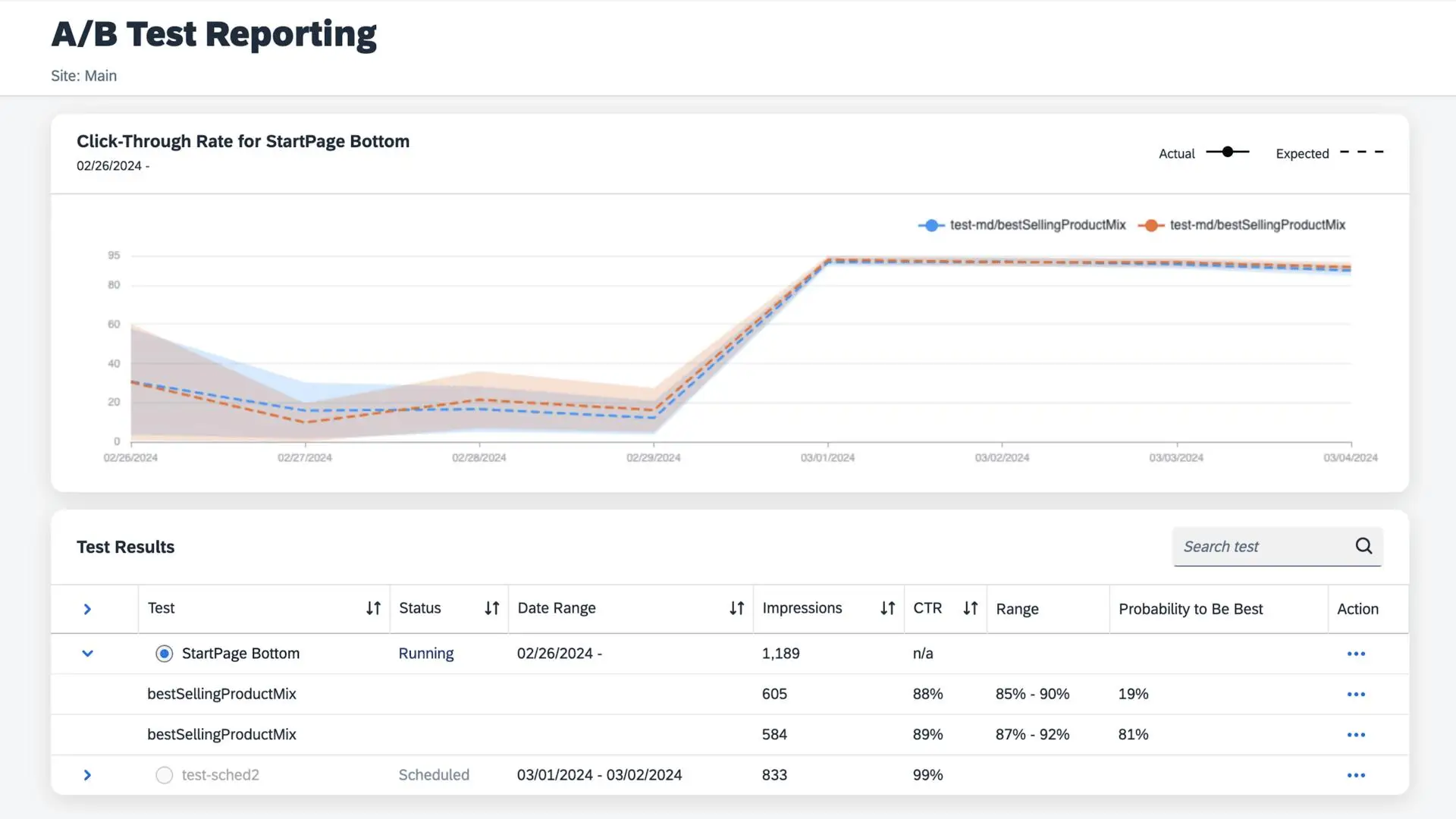
3.4. Smart product configuration
For businesses selling customizable or highly technical products, SAP Commerce Cloud offers a guided configuration tool. Customers can create product bundles, select variants, and see live pricing changes. This is a strong feature for B2B and complex B2C catalogs. It requires setup, but the experience it delivers is smooth and flexible once live.
These features are powerful, especially for large catalogs and multi-channel strategies. That said, some tools need proper setup to shine. If you’re serious about optimizing the shopping experience, these capabilities are definitely worth the effort.
4. Promotions & payments
Next on this SAP Commerce Cloud review, let’s talk about promotions and payments. This is an area where the platform really stands out for complex businesses.
First, the promotions engine is flexible and easy to use. You can create rules based on cart size, product types, or customer groups, all without writing code. Even better, it supports AI-driven promotions, so the system can personalize offers automatically based on user behavior, no manual setup needed.
On the payment side, the platform supports integrations with most major payment providers, like PayPal, Stripe, Adyen, etc. It also allows you to customize checkout flows to fit different regions or specific business needs. If your store has to manage multiple price lists, currencies, or discount strategies, SAP Commerce Cloud is built to handle it.
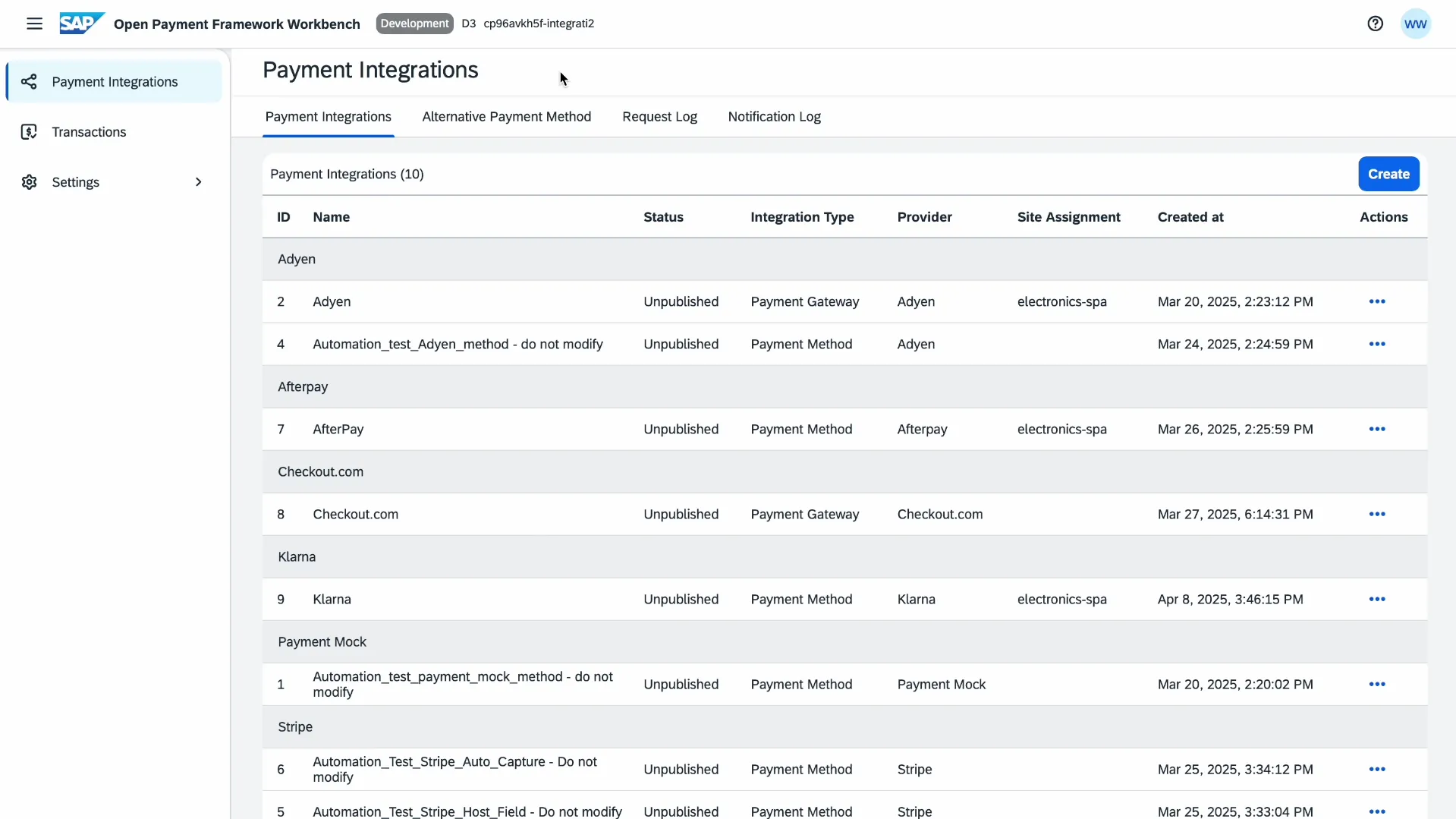
But what really stands out is how SAP handles pricing. You can manage multiple price lists, currencies, and customer-specific pricing across B2B, B2C, or hybrid models. The platform connects directly with SAP Cloud ERP, so your pricing and order management stay consistent and error-free.
5. Cross-border commerce
Expanding globally is complex, but SAP Commerce Cloud makes it a lot more manageable. You can run multiple localized storefronts from a single backend, each with its own currency, language, tax setup, and regulations. This centralized control is a game-changer for businesses operating in several countries.

Additionally, you don’t have to duplicate efforts every time you launch in a new region. With multicountry and multicurrency support, you can tailor product data, pricing, and checkout flows for local markets while still maintaining consistency in how your business operates behind the scenes.
For brands looking to scale internationally, these features provide a solid foundation. They go beyond simple translation by bringing logistics, compliance, and user experience together to ensure smooth operations in every market.
6. Integration & extensibility
A major strength of SAP Commerce Cloud lies in its seamless integration with other SAP solutions. You can easily integrate with SAP S/4HANA, SAP ERP, or SAP Marketing Cloud. It helps unify backend processes like inventory, pricing, and customer data, reducing silos and keeping operations in sync across departments.
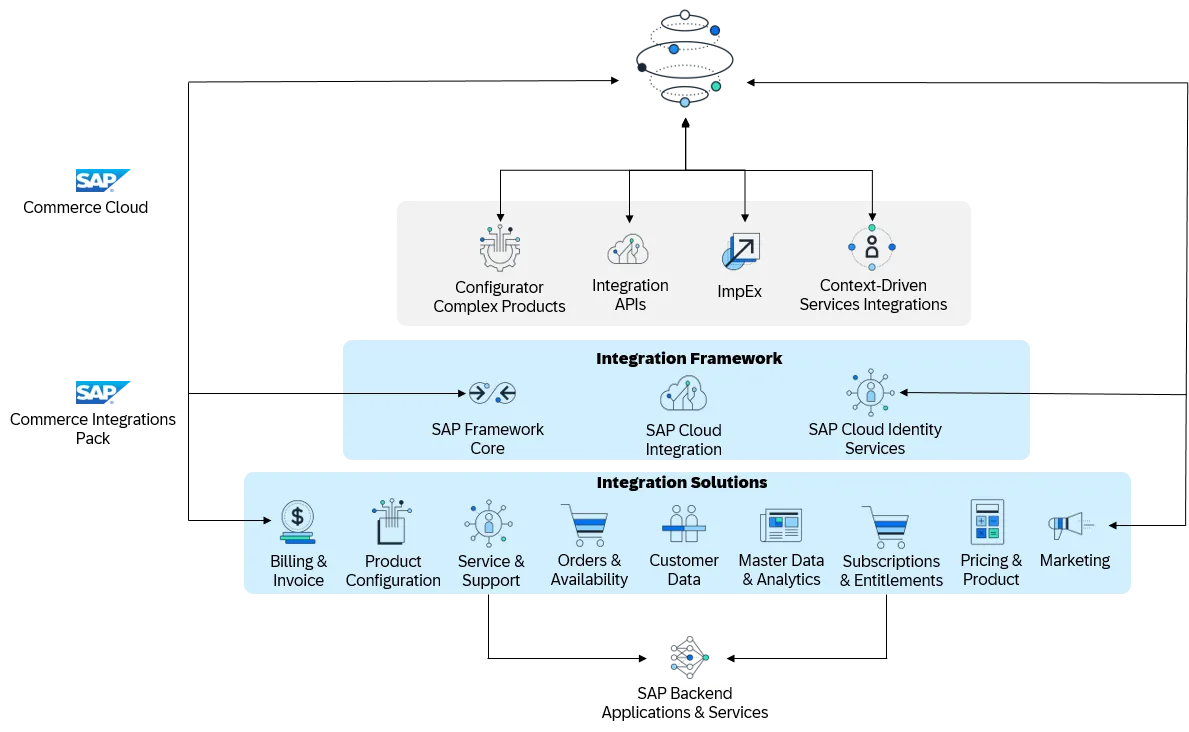
As a result, you can deliver real-time inventory updates, automate fulfillment, and personalize marketing based on actual customer behavior. All of this can be done without manual workarounds.
Beyond SAP’s own ecosystem, the platform also supports third-party systems. Through APIs and pre-built connectors, you can link SAP Commerce Cloud to your existing tech stack, though the deepest value comes when it’s paired with other SAP solutions.
7. AI & advanced capabilities
SAP Commerce Cloud brings AI into real, practical use, not just as buzzwords, but as tools that actually make a difference. Here are some standout capabilities that impressed us:
- Smart product assistance: Customers can ask questions in plain language and get clear answers fast. It helps them find specs, availability, and other key info without searching around.
- Product image designer: This tool lets your team create and customize product images with AI. You can remove backgrounds, match your brand style, or generate fresh visuals without heavy design work.
- Catalogue operations: You can auto-generate product descriptions, attributes, and translations. This is a huge help if you manage a large catalog across different regions.
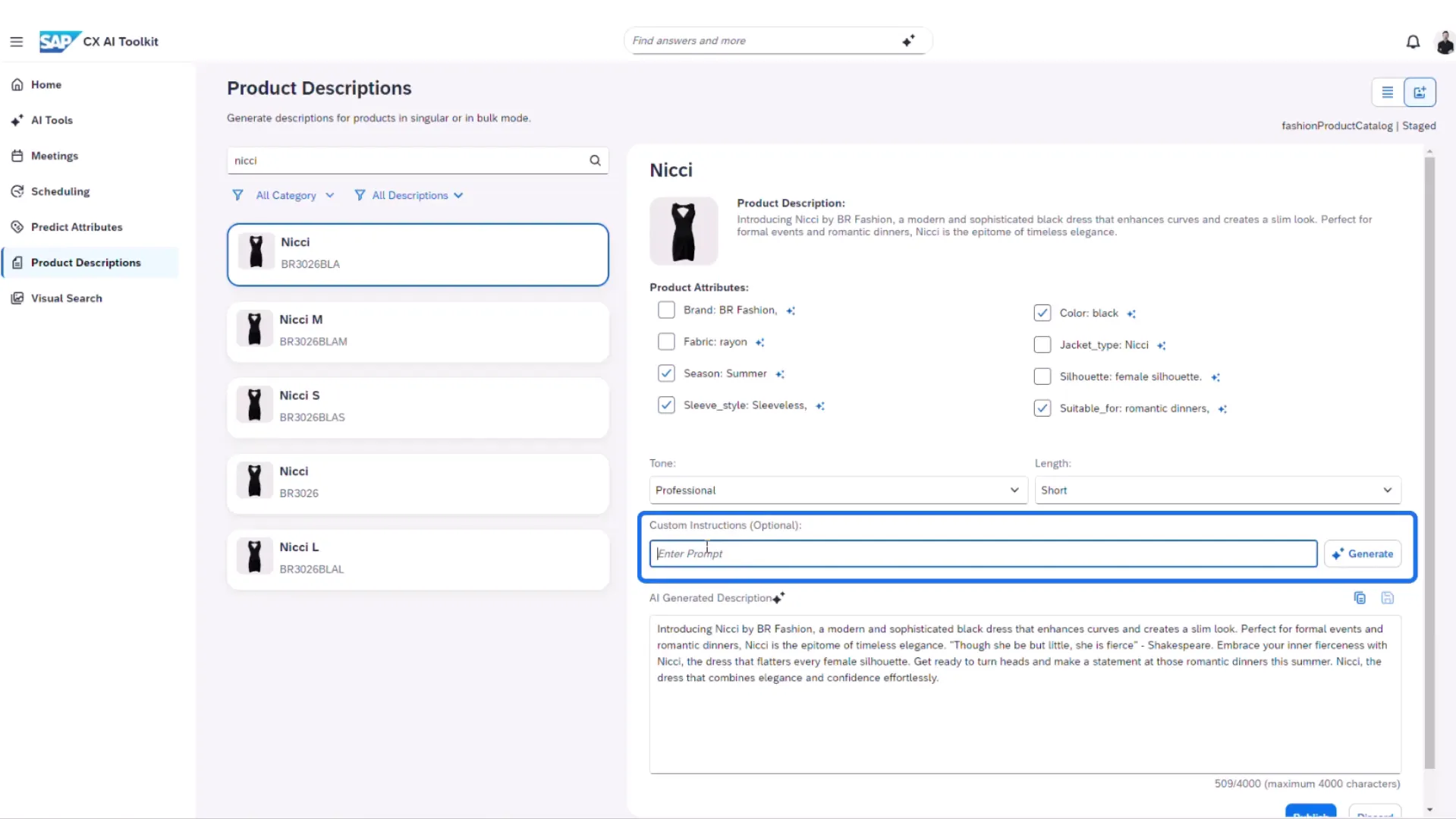
- Shopping assistant: A built-in AI agent that chats with users in real time. It answers questions, guides choices, and helps turn interest into actual purchases.
These AI features help reduce manual work, speed up catalog management, and offer more personalized shopping journeys. For businesses aiming to scale and serve global markets, this kind of AI support is a big advantage.
8. Architecture & technology
SAP Commerce Cloud architecture is designed with flexibility in mind. It follows a headless architecture, which simply means the front end (what customers see) is separated from the back end (where data and logic live). This setup makes it easier to build custom storefronts, mobile apps, or even connect to new sales channels.
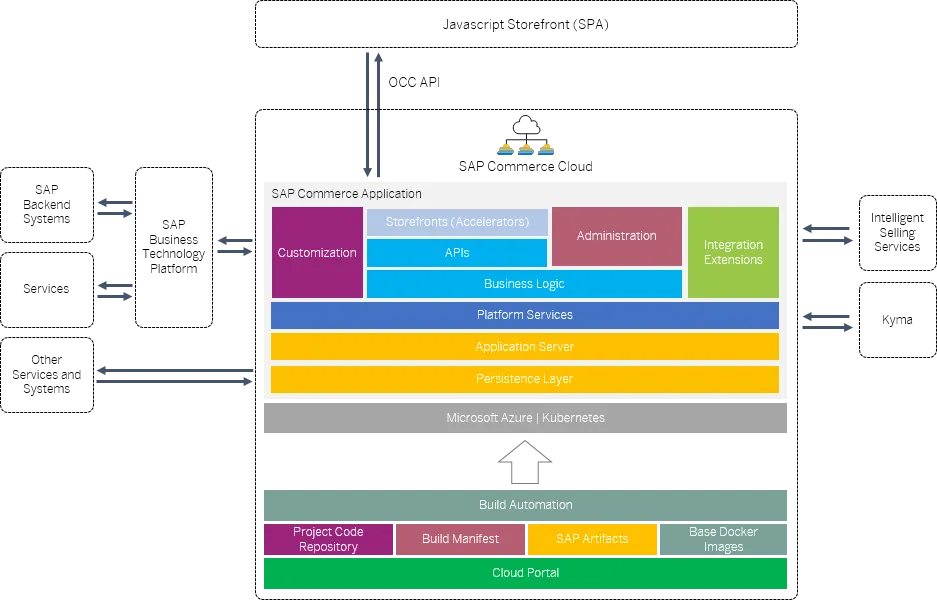
Behind the scenes, the platform operates on Microsoft Azure, utilizing modern cloud tools such as Kubernetes to manage scaling and performance. That means your store can handle high traffic, stay reliable, and roll out updates more smoothly, even across different regions.
SAP also connects Commerce Cloud to its Business Technology Platform (BTP), which brings in services like user authentication, monitoring tools, and real-time event handling. It’s all built to help large businesses manage complex operations without needing to piece everything together manually.
In short, the tech behind SAP Commerce Cloud gives your team the flexibility to innovate, the stability to scale, and the tools to stay in control.
9. Support & community
Since SAP Commerce Cloud is aimed at enterprises, it offers extremely dedicated support plans. These all give you access to 24/7 help desk, technical documentation, and customer success teams. If you're running mission-critical operations, the SAP Enterprise Support or Preferred Success packages are designed to give you more hands-on assistance and faster resolution times.
Documentation is solid, but there’s a learning curve. The SAP Help Portal covers everything from setup to extensions, but the content can feel overwhelming for teams without prior SAP experience. That’s why many businesses choose to work with certified consultants or partner agencies to make implementation smoother.
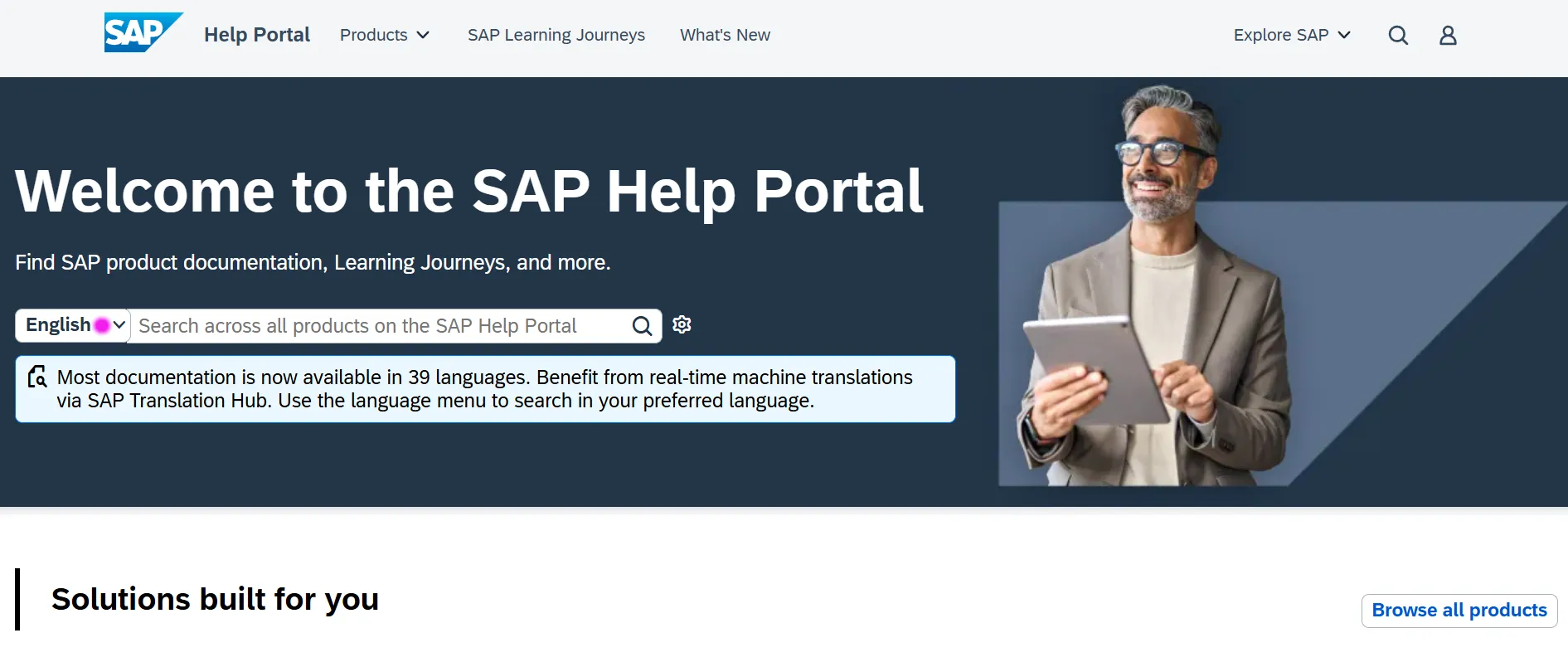
As for community, SAP has built a strong ecosystem. There’s an active SAP Community forum, dedicated Commerce Cloud tags, and a growing developer base sharing insights, code samples, and solutions. However, compared to platforms like Shopify or WooCommerce, the community is more enterprise-focused with fewer independent developers, reflecting the needs of its target audience.
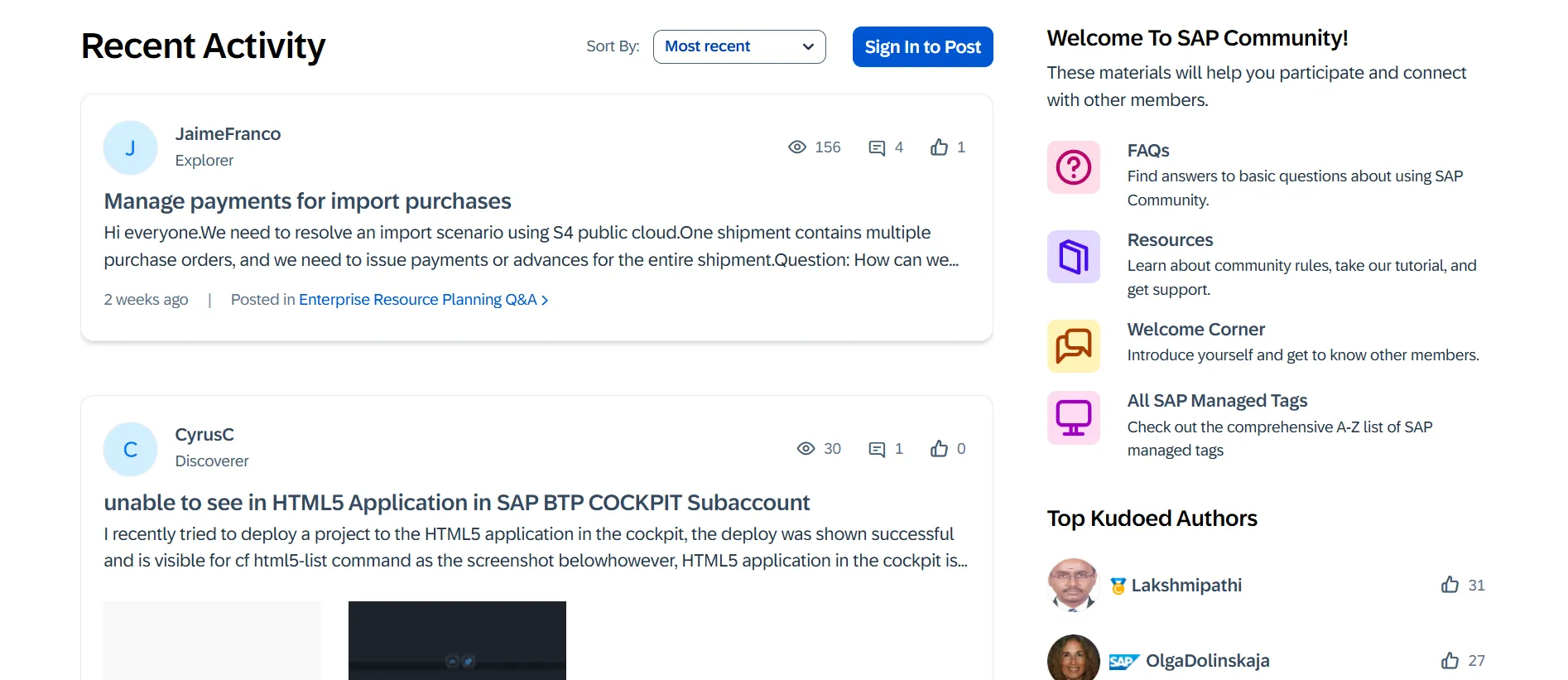
Challenges Users May Face with SAP Commerce Cloud
As powerful as SAP Commerce Cloud is, it’s not without its complexities – especially for teams who are new to enterprise-grade platforms. From our experience and observation, here are some common challenges businesses often run into:
- Significant migration obstacles
Moving from another platform into SAP Commerce Cloud can be a significant challenge. The process often involves restructuring product catalogs, customer data, and integrations to fit SAP’s model. Without a clear migration plan and experienced support, businesses risk data inconsistencies or extended downtime during the transition.
- High technical demands
From initial setup to daily operations, SAP Commerce Cloud requires skilled developers and often external SAP partners. Even features like content management or promotions need configuration that goes beyond what typical SaaS platforms offer. Without the right team, businesses may struggle to unlock the platform’s full value.
- Time and cost to implement
Our experience with the platform has shown that SAP Commerce Cloud implementation can be time-consuming and costly. All of the steps to launch a project, from customization, integration, to testing, all add up. It’s a long-term investment, not a quick-start tool. And while the platform scales beautifully, reaching that scale takes upfront effort.
- Complexity in upgrades and maintenance
Keeping the system current can be a challenge, especially for businesses with deep customizations. Upgrades aren’t automatic, they require testing, careful planning, and coordination between teams. Without proper resources, this can become a bottleneck.
Real B2B & B2C Use Cases with SAP Commerce Cloud
SAP Commerce Cloud isn’t just packed with features, it’s already proven itself in the real world. Many leading global brands are using SAP B2B eCommerce features to drive complex operations, run scalable storefronts, and deliver personalized experiences across touchpoints. Below, we explore how businesses from both sides of the commerce spectrum are putting the platform to work.
B2B case studies
SAP Commerce Cloud is trusted by leading B2B brands such as Nestlé, Brisa (Bridgestone), and Coca-Cola Hellenic Bottling Company. These companies use the platform to modernize ordering workflows, enhance customer experience, and operate at scale.
Let’s take a closer look at how Coca-Cola Hellenic Bottling Company put SAP Commerce Cloud into action:

- Implemented SAP Commerce Cloud alongside SAP Customer Data Cloud to build a consistent, flexible digital ordering experience with secure customer self-service.
- Supports over 160,000 business customers across 29 markets, processing more than 130,000 orders per month, demonstrating strong scalability and reliability.
- Accelerated release cycles from every 4–8 weeks to just every 2 weeks, enabling faster deployment of new features and improvements.
- Deployed a self-service portal where customers can place orders, check delivery status, view invoices, and manage their account, available 24/7 on any device.
- Integrated with SAP S/4HANA using SAP Integration Suite, enabling real-time access to pricing, promotions, credit limits, and inventory, keeping order management accurate and seamless.
B2C case studies
For B2C brands, SAP Commerce Cloud delivers the scale, personalization, and seamless omnichannel experience that modern consumers expect, without compromising on speed or performance. Companies like Maui Jim, ALDO Group, and The Body Shop have successfully used the platform to power their global eCommerce strategies.
Here’s how Maui Jim, the premium eyewear brand, achieved global digital transformation with SAP Commerce Cloud:

- Deployed SAP Commerce Cloud to power its global eCommerce expansion, supporting operations across multiple languages and currencies, with region-specific content and pricing.
- Unified both B2C and B2B channels on a single platform, simplifying operations while still delivering tailored experiences for different customer segments.
- Enabled one-click purchasing, hassle-free returns, and embedded customer service. Thus creating a smooth and intuitive shopping journey across mobile, desktop, and in-store touchpoints.
- Leveraged SAP Customer Data Cloud and SAP Service Cloud to provide secure login, self-service tools, and responsive customer support, helping the brand stay connected with its loyal customer base.
SAP Commerce Cloud Review: FAQs
What is SAP Hybris now called?
SAP Hybris is now known as SAP Commerce Cloud. The platform was rebranded after SAP moved its commerce capabilities to the cloud, making it part of the broader SAP Customer Experience (CX) portfolio.
Is SAP Commerce Cloud the same as Hybris?
Yes, SAP Commerce Cloud is the cloud-based evolution of SAP Hybris. It still offers the powerful B2B and B2C commerce features Hybris was known for, but now benefits from cloud scalability, faster deployment, and tighter integration with other SAP tools.
What are the benefits of SAP Commerce Cloud?
SAP Commerce Cloud gives businesses full control over complex commerce models across B2B, B2C, and hybrid environments. You get a centralized product catalog, personalized storefronts, powerful search and merchandising tools, and deep integration with SAP ERP and CRM, all on a platform that can scale globally.
Who uses SAP Commerce Cloud?
SAP Commerce Cloud is mostly used by large enterprises and global brands with complex catalogs, multi-region operations, or multiple sales models. Companies like Sejong Center, Office Depot, and Coca-Cola HBC use it to power digital experiences across B2B and B2C.
What is the alternative to SAP Commerce Cloud?
Popular alternatives include Adobe Commerce (Magento Enterprise), Salesforce Commerce Cloud, and commercetools. Each offers different strengths. For example, Adobe is strong in content and design flexibility, while commercetools is API-first and highly composable.
Conclusion
SAP Commerce Cloud is not for every business, and it doesn’t try to be. But for enterprises managing multiple catalogs, customer groups, and global storefronts, it delivers the tools, scale, and flexibility needed to run complex commerce operations.
So if you’re looking for an all-in-one solution that tightly integrates with SAP’s ecosystem and supports highly customized experiences at scale, SAP Commerce Cloud can be a solid long-term investment.
Hopefully, this review has helped you to further understand SAP Commerce Cloud features. If you're still exploring, we’ve got more eCommerce insights on our blog and a community group to connect with others. Check them out now!
